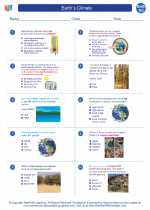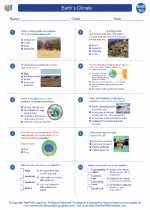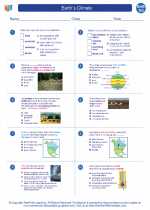Hurricanes
A hurricane is a type of tropical cyclone, which is a rotating storm system originating over warm tropical waters. These storm systems are characterized by strong winds, heavy rainfall, and can cause significant damage to coastal areas. In the Atlantic and Northeast Pacific, the term "hurricane" is used, while the same type of disturbance in the Northwest Pacific is called a "typhoon".
Formation of Hurricanes
Hurricanes form over warm ocean waters when the conditions are right, including warm sea surface temperatures, high humidity, and a pre-existing weather disturbance. As warm air rises from the ocean surface, it creates an area of low pressure. As more air is drawn into this low-pressure area, it begins to rotate due to the Earth's rotation and the Coriolis effect.
Anatomy of a Hurricane
A hurricane is comprised of several key components, including the eye, eyewall, and rain bands. The eye is the central part of the hurricane, characterized by calm and clear conditions. Surrounding the eye is the eyewall, which contains the strongest winds and heaviest rainfall. The rain bands extend outward from the eyewall and can produce additional heavy rainfall and strong winds.
Impact of Hurricanes
Hurricanes can have a devastating impact on coastal areas, causing widespread damage from strong winds, storm surges, and heavy rainfall leading to flooding. In addition to the immediate physical damage, hurricanes can also disrupt infrastructure, lead to loss of life, and have long-term economic impacts on affected areas.
Study Guide
- What are the key conditions required for the formation of hurricanes?
- Describe the structure of a hurricane, including its key components.
- Explain the potential impact of hurricanes on coastal areas and communities.
- Discuss the differences between hurricanes and typhoons.
- Research a historical hurricane and present a case study on its impact.
By understanding the formation, anatomy, and impact of hurricanes, we can better prepare for and respond to these powerful storm systems.
.◂Earth Science Worksheets and Study Guides High School. Earth`s Climate

 Worksheet/Answer key
Worksheet/Answer key
 Worksheet/Answer key
Worksheet/Answer key
 Vocabulary/Answer key
Vocabulary/Answer key
 Vocabulary/Answer key
Vocabulary/Answer key
 Vocabulary/Answer key
Vocabulary/Answer key
